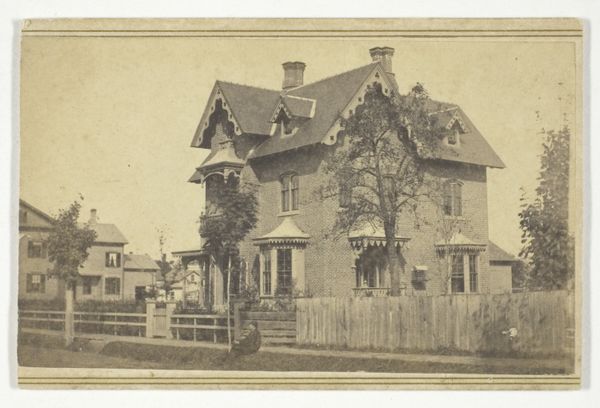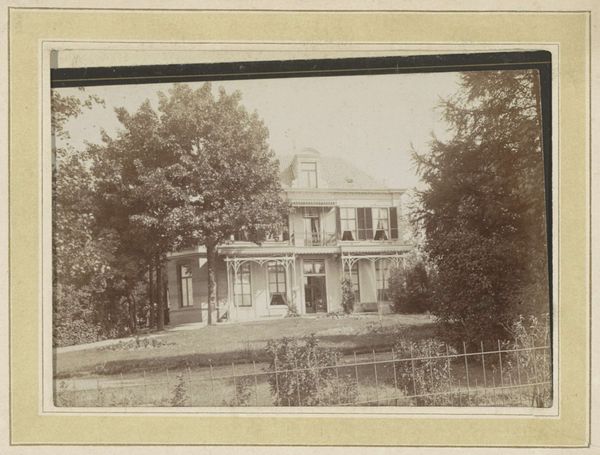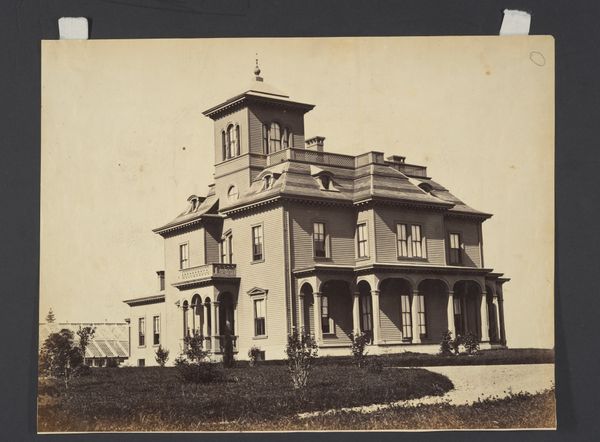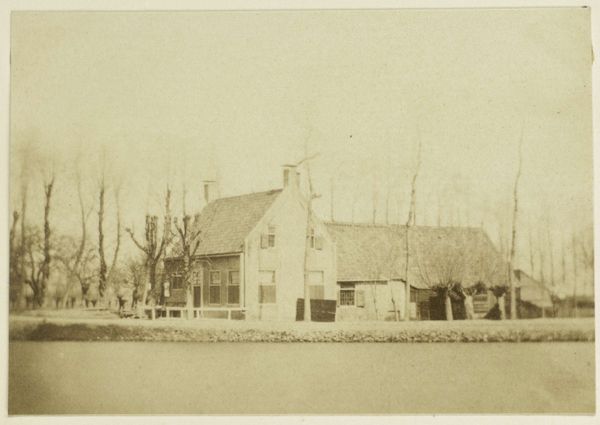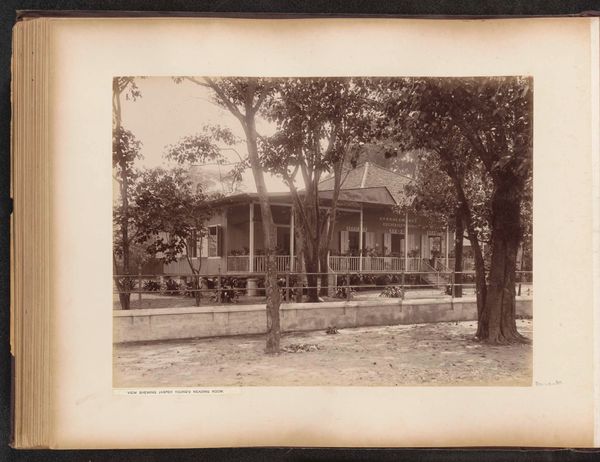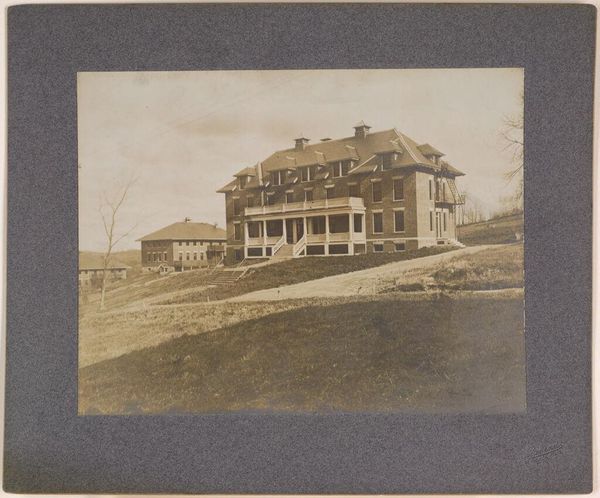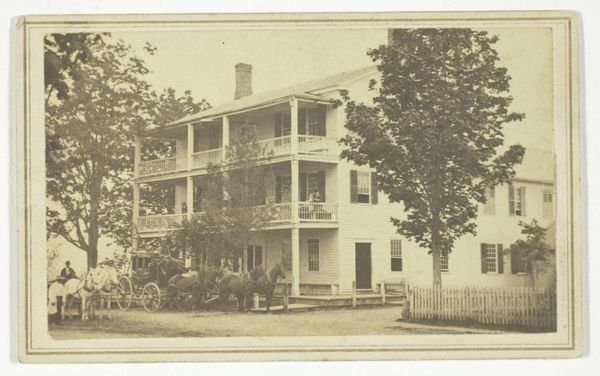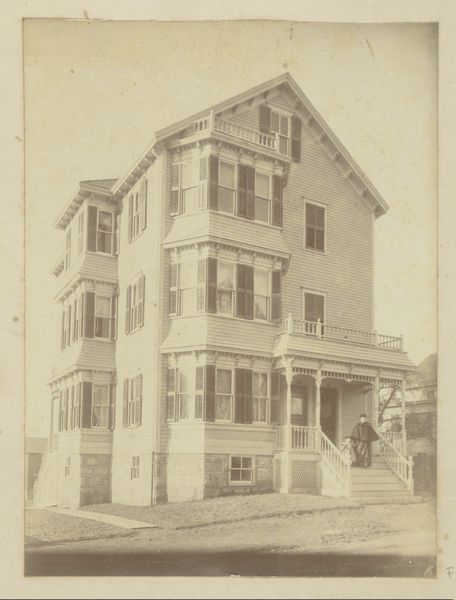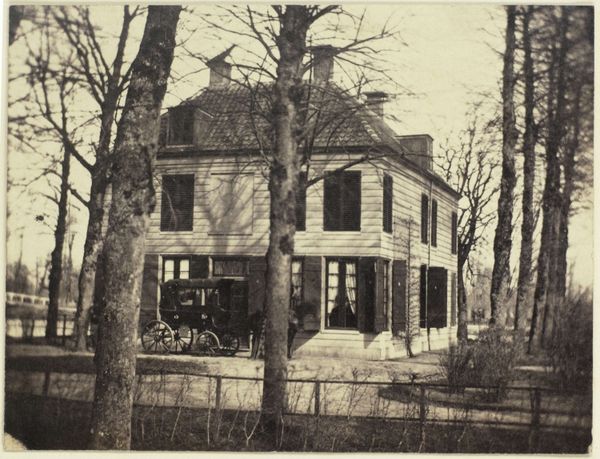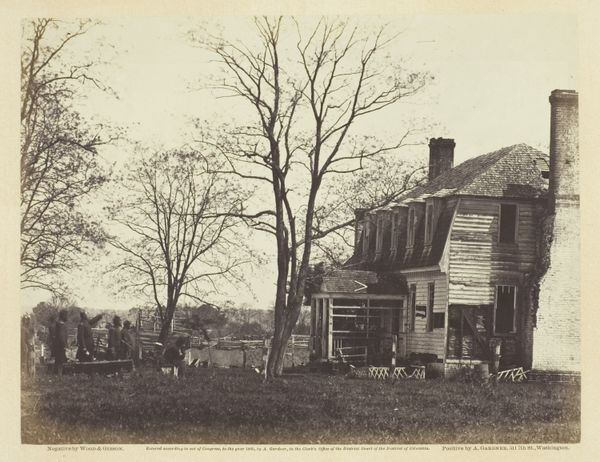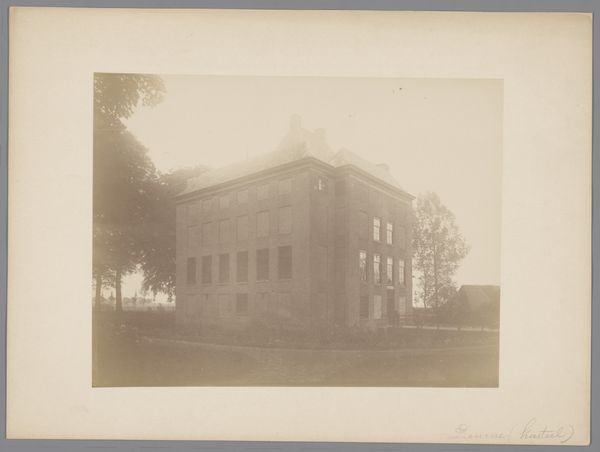
Het door H.P. Berlage ontworpen huis van D. van Eeden in Bussum 1893
0:00
0:00
photography, albumen-print, architecture
#
arts-&-crafts-movement
#
landscape
#
photography
#
cityscape
#
albumen-print
#
architecture
#
realism
Dimensions: height 203 mm, width 276 mm, height 293 mm, width 357 mm
Copyright: Rijks Museum: Open Domain
Editor: This albumen print, "Het door H.P. Berlage ontworpen huis van D. van Eeden in Bussum," taken by Pieter Oosterhuis in 1893, depicts a serene house nestled among trees. The light and shadow create such a peaceful, almost idyllic scene. What stands out to you when you look at this piece? Curator: I'm drawn to how this photograph intersects with the social reform movements of the late 19th century. Think about Frederik van Eeden, for whom the house was built; he was a prominent figure in the Dutch Arts and Crafts movement, deeply involved in socialist ideals and utopian communities. This house, designed by Berlage, wasn't just a dwelling, but a statement. How does the architecture reflect those progressive ideals, do you think? Editor: I hadn't considered that angle. The house does have a kind of understated elegance. It's not ostentatious like some wealthy homes I've seen from that era; it’s fairly simple, but has a harmonious design with natural elements. Does this photograph challenge the traditional views of wealth and privilege at the time? Curator: Precisely! Photography was becoming increasingly accessible, offering a democratizing lens. Images like this subtly promoted a different vision of domesticity, aligning with the Arts and Crafts emphasis on functionality and beauty accessible to all, not just the elite. Look at the positioning of the house; how it seems integrated with nature, rather than dominating it. This embodies a critique of industrial capitalism's alienation from the environment. Does it shift your understanding of photography’s role in shaping social consciousness at the time? Editor: Definitely. I had considered its artistic merit and historical record. I see it now as a form of advocacy, quietly pushing for a more egalitarian vision. Curator: Exactly, and perhaps even shaping new modes of seeing and, importantly, being in the world. That house becomes not only an ideal to strive towards but a quiet rebellion. Editor: It’s amazing how a seemingly simple photograph can reveal so much about the values of the era. Curator: Absolutely! The layers of context transform our reading.
Comments
No comments
Be the first to comment and join the conversation on the ultimate creative platform.
